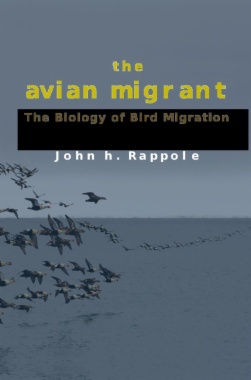The purpose of migration, regardless of the distance involved, is to exploit two or more environments suitable for survival or reproduction over time, usually on a seasonal basis. Yet individual organisms can practice the phenomenon differently, and birds deploy unique patterns of movement over particular segments of time. Incorporating the latest research on bird migration, this concise, critical assessment offers contemporary readers a firm grasp of what defines an avian migrant, how the organism came to be, what is known about its behavior, and how we can resolve its enduring mysteries.
John H. Rappole's sophisticated survey of field data clarifies key ecological, biological, physiological, navigational, and evolutionary concerns. He begins with the very first migrants, who traded a home environment of greater stability for one of greater seasonality, and uses the structure of the annual cycle to examine the difference between migratory birds and their resident counterparts. He ultimately connects these differences to evolutionary milestones that have shaped a migrant lifestyle through natural selection. Rather than catalogue and describe various aspects of bird migration, Rappole considers how the avian migrant fits within a larger ecological frame, enabling a richer understanding of the phenomenon and its critical role in sustaining a hospitable and productive environment. Rappole concludes with a focus on population biology and conservation across time periods, considering the link between bird migration and the spread of disease among birds and humans, and the effects of global warming on migrant breeding ranges, reaction norms, and macroecology.
- Contents
- Preface
- Acknowledgments
- 1. Introduction
- Development of Human Understanding of Migration
- Origins of Migration
- Types of Migration
- Patterns of Migration Within Species
- Adaptation for Migration
- 2. Breeding Period
- Beginning the Cycle: Arrival at the Breeding Grounds
- Site Fidelity and Dispersal
- Habitat Selection
- Interval Between Arrival and Reproduction
- Reproduction
- 3. Postbreeding Period
- Purposes of the Postbreeding Period
- Movement and Habitat Use During the Postbreeding Period
- Duration of the Postbreeding Period
- Timing and Siting of the Prebasic Molt in Relation to Other Major Life Cycle Events
- 4. Fall Transient Period
- Preparation for Departure
- Cues for Departure
- Timing of Departure Within the Circadian Period
- Migratory Flight
- Migration Route
- Orientation and Navigation
- Stopover
- 5. Wintering Period
- Arrival
- Social Structure During the Nonbreeding Period
- Nonbreeding/Winter Distribution
- 6. Spring Transient Period
- Preparation for Departure
- Cues for Departure
- Timing of Departure Within the Spring Transient Period
- Timing of Departure Within the Circadian Period
- Migratory Flight (Zugstimmung)
- Migration Route
- Orientation and Navigation
- Stopover
- Climate Change
- 7. Population Ecology
- Theory
- Population Change
- Causes of Migrant Population Change
- 8. Evolution and Biogeography
- The Theory
- Exaptions Versus Adaptations for Migration
- Genetics of Migration
- Rapid Development of Migration
- Reaction Norms
- Population Differentiation
- Ornithogeography and Migration Patterns
- The World's Principal Migration Systems
- 9. Migratory Birds and Pathogen Movement
- West Nile Virus
- Avian Influenza
- 10. Connectivity and Conservation
- Connectivity
- Conservation
- 11. Conclusion
- Migration as a Life History Strategy
- Appendix A: Population Dynamics of Periodic Breeders
- Generalized Single-Habitat Logistic Models
- Multiple-Habitat Models
- Discrete Models
- Metamorphic and Spawning Species with Non-Overlapping Generations
- Threshold Effects
- Summary
- Appendix B: Age-Structured Periodic Breeders
- Age-Independent Periodic Breeders
- Age-Structured Models
- Summary
- References
- Taxonomic Index
- Index

